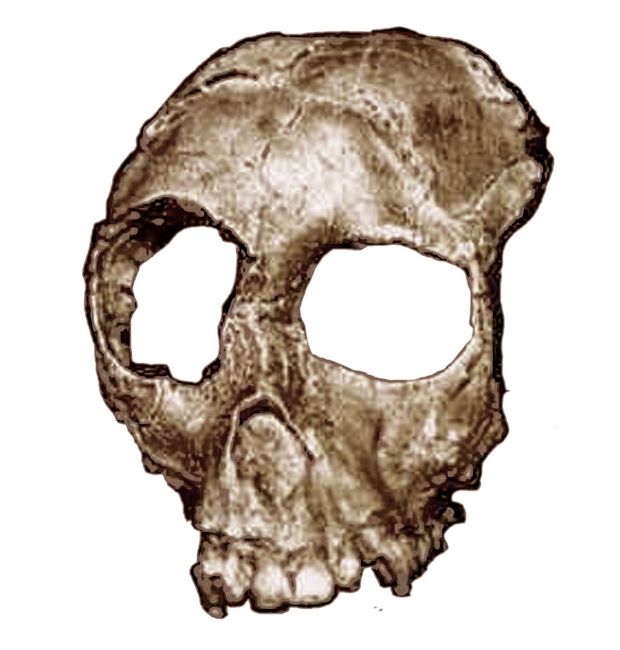Athena Review Image Archive ™
Dryopithecus fontani skull

Skull of Dryopithecus fontani (Mus.Nat Hist.Paris, cast)
Dryopithecus was
a Late Miocene ape that spread from East Africa into Europe. The
genus was discovered at Sain-Gaudens, France by Lartet in 1856 in a
context dated at about 11.5 mya. Since then, further fossils of Dryopithecus have been found in Spain, Hungary, and China. Three species have been defined, D. widuensis, D. fontani, and D. brancoi.
Although classified as an ape (hominoid), Dryopithecus
resembled a monkey more than a modern
ape. Based on its wrist and arm structures, it walked on all fours
using the flat of its hands, like a monkey, instead of the
knuckle-walking used by modern apes. It probably lived in trees, using its arms to brachiate from limb to limb, as with modern orangutans and gibbons.
The molar teeth of Dryopithecus showed a Y-5 pattern, with five cusps, typical of hominoids. The molars had thin enamel, suggesting that it ate soft leaves and fruit.
Dryopithecus had a relatively large brain, and a gracile jaw that did not greatly protrude. In these respects it may be contrasted with the contemporary Sivapithecus from northern Pakistan.
References:
Begun, David R. 2004. Sivapithecus is east and Dryopithecus is west, and never the twain shall meet. Anthropological Science. 113 (1): 53–64.:
Simons, E. L and W. Meinel (1983). Mandibular ontogeny in the Miocene great ape Dryopithecus. International Journal of Primatology. 4 (4).
.
Copyright © 1996-2020 Rust Family Foundation (All Rights Reserved).